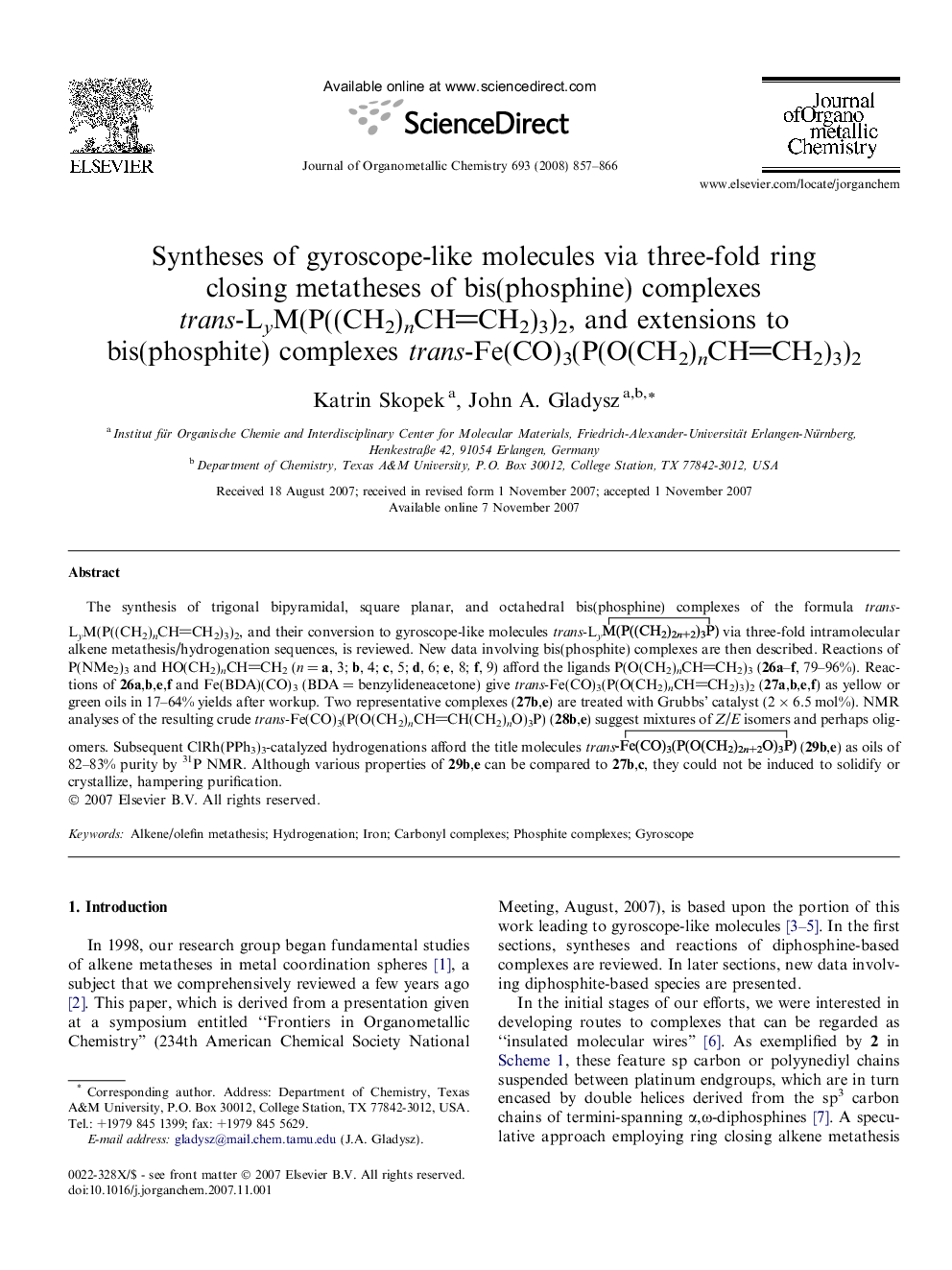| Article ID | Journal | Published Year | Pages | File Type |
|---|---|---|---|---|
| 1323246 | Journal of Organometallic Chemistry | 2008 | 10 Pages |
The synthesis of trigonal bipyramidal, square planar, and octahedral bis(phosphine) complexes of the formula trans-LyM(P((CH2)nCHCH2)3)2, and their conversion to gyroscope-like molecules trans-Ly via three-fold intramolecular alkene metathesis/hydrogenation sequences, is reviewed. New data involving bis(phosphite) complexes are then described. Reactions of P(NMe2)3 and HO(CH2)nCHCH2 (n = a, 3; b, 4; c, 5; d, 6; e, 8; f, 9) afford the ligands P(O(CH2)nCHCH2)3 (26a–f, 79–96%). Reactions of 26a,b,e,f and Fe(BDA)(CO)3 (BDA = benzylideneacetone) give trans-Fe(CO)3(P(O(CH2)nCHCH2)3)2 (27a,b,e,f) as yellow or green oils in 17–64% yields after workup. Two representative complexes (27b,e) are treated with Grubbs’ catalyst (2 × 6.5 mol%). NMR analyses of the resulting crude trans-Fe(CO)3(P(O(CH2)nCHCH(CH2)nO)3P) (28b,e) suggest mixtures of Z/E isomers and perhaps oligomers. Subsequent ClRh(PPh3)3-catalyzed hydrogenations afford the title molecules trans (29b,e) as oils of 82–83% purity by 31P NMR. Although various properties of 29b,e can be compared to 27b,c, they could not be induced to solidify or crystallize, hampering purification.
Graphical abstractThe title reaction can be applied to trigonal bipyramidal, square planar, and octahedral complexes, provided that the spectator ligands Ly that comprise the rotor are no larger than halides or carbon monoxide, and is extended to trigonal bipyramidal phosphite complexes.Figure optionsDownload full-size imageDownload as PowerPoint slide
